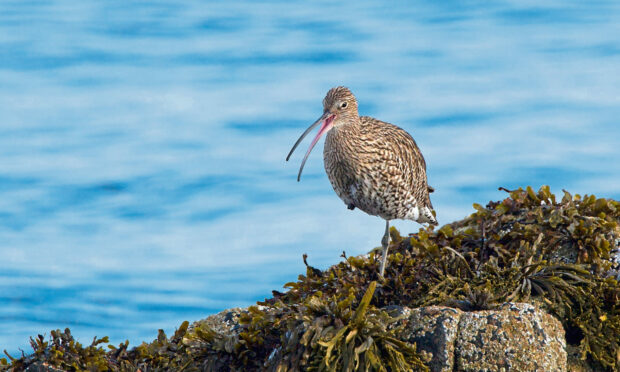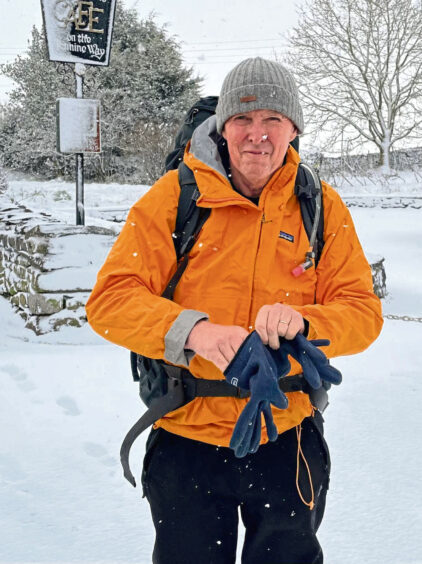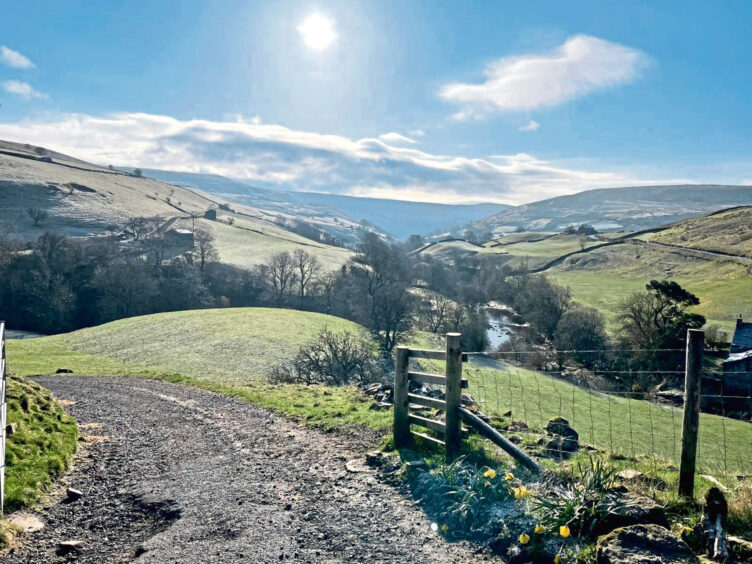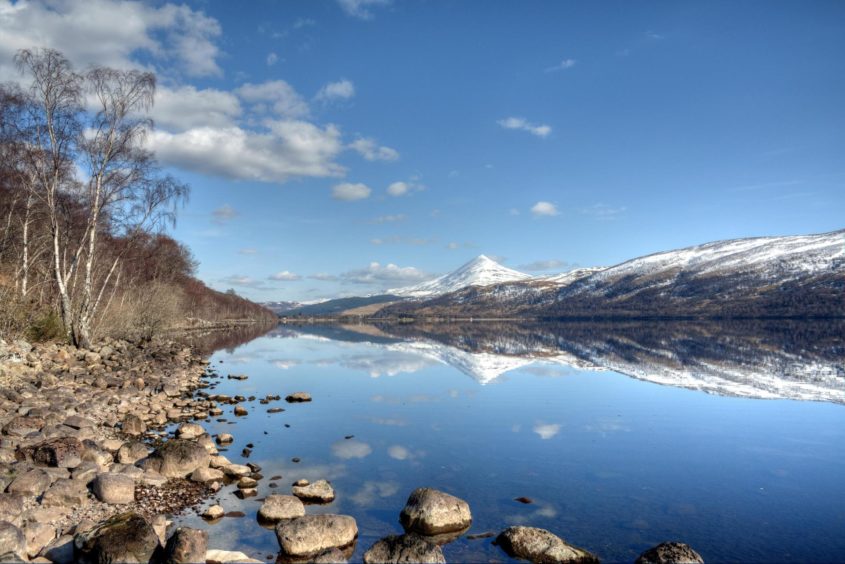Ex-soldier and author Roger Morgan-Grenville is walking 1,000 miles across the UK to save curlews. He catches up with Gayle Ritchie in Perthshire.
The incredible bubbling cry of the curlew is hauntingly evocative of remote wild places.
Sadly it’s a cry that is all too seldom heard these days.
As one of Britain’s most threatened birds, the curlew is in dire straits.
There are around 68,000 breeding pairs in the UK which makes up about a quarter of the world’s breeding population, but since 1995 numbers have been slashed by almost 50%.
Luckily for the curlew, there are some powerful and pro-active people fighting for its survival.
Among them is ex-soldier and author Roger Morgan-Grenville.
Charity walk
Right now, Roger is walking 1,000 miles from Lymington in the New Forest to Cape Wrath to raise awareness and funds for the small UK charity, Curlew Action, which works to reverse the decline of the Eurasian curlew, Britain’s largest wading bird.
Roger is the chair of trustees for the charity, which was set up in 2019 by natural history author and producer Mary Colwell.
He joined after reading Mary’s book Curlew Moon, her 2018 account of the decline of the species.
Roger’s goal for the walk, which will see him covering around 20 miles a day, is to raise £75,000 for curlew conservation.
Improving habitats
I catch up with Roger, 62, as he’s in Perthshire and preparing to meet with volunteers from the John Muir Trust who are working to improve important upland habitats at Schiehallion – including heather moorland and bog – which are home to threatened species, including curlews.
“Curlews are a bioindicator species – they represent the overall health of the landscape,” says Roger.
“Their decline represents wider biodiversity loss across British landscapes and so protecting curlews means protecting many other species.”
Roger hopes his endeavours will draw attention to the fact there is a chance to save the curious-looking long-beaked birds.
“If we do nothing, they’ll become extinct,” he muses. “But here we have an opportunity to reverse the trends towards habitat destruction and we should take it. If you think about the red kite, these birds were more or less extinct 20 or 30 years ago, with persecution and egg collecting and the like. We stepped in to help and now its future as a British breeding species is much brighter with numbers rising.”
Curlews in crisis
Curlews are suffering because of loss of habitat, frequent grass cutting for silage, and unsustainable predation rates of their eggs and chicks. The situation is so serious the journal British Birds has referred to it as the most urgent bird conservation issue in the UK.
“If we can help farmers change the way they farm, and negotiate with landowners, then there’s hope for curlew recovery,” says Roger.
“We talk about climate change but very little about biodiversity loss – but it’s much easier than climate change to reverse.
“It’s just about raising awareness and taking the foot off the throttle of whatever you’re making extinct.
“The dominant reason is habitat loss. These days farmers take three cuts of silage, in April, May and late June. Any bird trying to nest hasn’t got a chance – chicks can get caught up in farm machinery.
“Predation is also a factor in their struggle to survive – curlew chicks are often killed by foxes and crows before they can fly.
“Habitat loss is a major issue as is drainage of grasslands for agriculture and afforestation – the planting of trees in areas where there was previously little to no tree cover.
“It’s about recognising that when a forestry block is planted, the breeding ground for nesting birds is lost – they’ve nowhere to go.”
If we do nothing, they’ll become extinct.”
ROGER MORGAN-GRENVILLE
A busy man
Roger is part of the team that first set up the charity Help for Heroes. He has been a soldier, a charity worker and author.
Previous books include Liquid Gold: Bees and the Art of Midlife Honey, and Shearwater: A Bird, an Ocean and a Long Way Home.
He will be writing a book, due to be published in March 2023, about his 1,000-mile walk and the biodiversity restoration projects he’s visiting along the route.
“My idea was to walk across the country visiting about 20 scientific biodiversity restoration projects in coastal, urban, river and mountain areas and look at what can be done to help,” he explains.
“I also wanted to see if I could make my 62-year-old body walk 20 miles a day and so far, so good. I’ve no blisters yet and I don’t hurt too much.
“I’m privileged to be doing this. But walking is a wonderful way to see the country. Most of us see it go by at 70mph from a motorway or on a train, plane or bike. What’s wonderful about going at 3mph on foot is that you see so many things you wouldn’t notice if you were going faster. You see how the habitats around you change so gradually.
“I’ve learned as much in the last few weeks of walking as I have in the last six decades.
“I’m doing this every day for eight weeks, with the occasional day off. But the effort is needed and is worth it, if we want to save what is precious in nature for our children.”
Roger is around Schiehallion this weekend meeting with the John Muir Trust to discuss conserving the landscape and its wild inhabitants.
“It’s about managing red deer access to the mountain and helping ground nesting birds to flourish through selective culling and fencing,” he says. “It’s also about working with neighbouring landowners and looking at how we manage problems together.
“We don’t solve these things in isolation; there’s no good having a little oasis of biodiversity and nothing more.
“It’s about inspiring people to get on board and help. It’s about asking – if not you, who, and if not now when? It’s about taking responsibility and not forgetting about nature.
“Do we really just want to be armchair naturalists or is there potential to act – to get people to pick up shovels, get out there and do something?”
Other projects Roger is visiting on his travels include the Edinburgh Shoreline Project, where he will meet volunteers removing invasive species and replacing seagrass meadows, Glen Affric nature reserve, and the Trees for Life rewilding project near Fort Augustus.
Celebrity backing
Singer-songwriter David Gray, a patron of Curlew Action, describes Roger’s thousand-mile walk as a “Herculean challenge” and “Frodo Baggins level stuff”.
He adds: “Through the rain, hail, sleet and snow, Roger has taken on this Herculean challenge for the sake of our majestic curlews.
“It’s Frodo Baggins level stuff. What else is there to say as we doff our caps, except – please give generously.”
Mary Colwell, director of Curlew Action and author of Curlew Moon, describes Roger as “a hero”, adding: “It’s no small undertaking to walk the length of Britain, a tough uncompromising journey with all kinds of ups and downs. But that is the wonder of curlews – they inspire us to do all sorts of amazing things.”
Roger hopes that if he’s prepared to put his body through “a bit of punishment” for a couple of months it might inspire people not just to donate, but also to learn more about the charity and what we all need to do to save the curlew.
The money he raises will allow Curlew Action to run free online seminars teaching people about curlews and how they fit into the British landscape, enable a network of primary schools to learn about curlews, support conservation work, World Curlew Day activities, and to support vital scientific research.
Meanwhile, the charity is spearheading a campaigning for a GSCE in natural history to address the issue of many of today’s children having a lack of connection to nature.
For example, a 2019 BBC study found that four out of five children in the UK were unable to identify a bumblebee, while one in two failed to identify a nettle.
The study found that in contrast to previous generations, 40% of children now barely spend time playing outdoors. This leads to a deficit of knowledge and understanding of our neighbours in the natural world – not knowing names is indicative of a deeper gulf between us and nature.
“If we don’t know the name of something, it’s very difficult to have a meaningful relationship with it,” says Mary, who notes how the Oxford Junior Dictionary has removed a number of nature words such as “conker”, “magpie” and “otter” because they “are now not considered useful to children in early secondary or late junior school”.
- The donation page for Roger’s walk is available at: curlewaction.org/1000milewalkforcurlews













